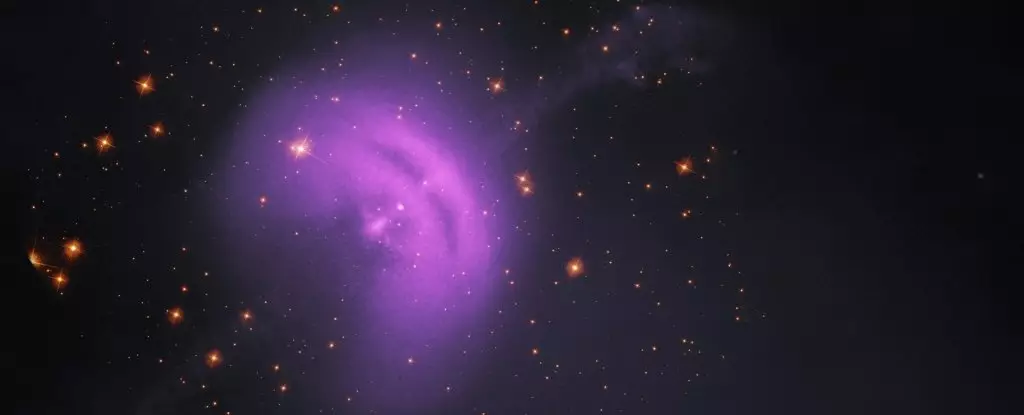Cosmic rays have intrigued scientists for decades, as they are high-energy particles that travel through space at incomprehensible speeds, often hailing from some of the universe’s most extreme phenomena. Among these cosmic rays, electrons and positrons emerge as notable players. Recent findings from the H.E.S.S. Observatory in Namibia have led to groundbreaking data revealing the highest energies observed in cosmic-ray electrons (CRe), with energies soaring up to an astonishing 40 teraelectronvolts (TeV). Understanding these particles not only sheds light on their origin but also enhances our comprehension of fundamental astrophysical processes.
The Significance of High-Energy Measurements
The implications of detecting such powerful electrons are monumental. Kathrin Egberts, an astrophysicist from the University of Potsdam, emphasizes that these measurements strongly indicate that these cosmic ray electrons likely originate from a limited number of sources within a mere few thousand light-years from our Solar System. This proximity is astonishing, given the vast size of our galaxy, suggesting that we are in the midst of a cosmic neighborhood teeming with activity. The rarity of CRe amplifies their significance; they are not just mere background noise but important messengers carrying valuable information about the universe’s energetic environments.
Mechanisms Behind Cosmic Ray Production
But what exactly propels these cosmic rays to such extraordinary energies? The sources identified by scientists include sensational phenomena like supernova remnants, black hole surroundings, and pulsars. These extreme objects, through various mechanisms, accelerate electrons and positrons to speeds that allow them to traverse vast interstellar distances. Upon entering Earth’s atmosphere, these particles react with atmospheric molecules, resulting in Cherenkov radiation—a faint but detectable light phenomenon akin to a sonic boom in sound waves. This observation poses a unique challenge for researchers; differentiating between CRe and gamma rays becomes a complex task due to their similar effects.
Astronomer Mathieu de Naurois from the French National Center for Scientific Research articulates a key distinction: while electrons represent charged particles that interact chaotically with magnetic fields, gamma rays behave as uncharged photons that travel in straight lines throughout space. The electrifying elusiveness of CRe trajectories complicates the task of pinpointing their origins. To classify potential CRe observations from the data harvested by H.E.S.S., researchers needed to meticulously sift through a sea of candidate events, accepting that some may inadvertently include gamma rays. This labor-intensive process yields significant insights into cosmic ray origins.
The interplay between energy loss and distance adds another layer to this cosmic puzzle. As they traverse through interstellar mediums, cosmic ray electrons undergo rapid energy degradation due to mechanisms such as synchrotron radiation and Inverse Compton Scattering. The latter explains how high-energy particles lose energy after colliding with lower-energy photons, resulting in increased energy for the latter. Yet, intriguing observations reveal that CRe maintain their potency only if they originate from nearby sources; their sharp energy cut-off at 1.17 TeV hints at limited origins. Any deviation would likely result in a smoother, more diffuse energy distribution.
Potential Cosmic Ray Sources
The limited volume from which these CRe emerge narrows the source possibilities significantly. Among the leading candidates are the Monogem Ring— a supernova remnant—and the Wolf-Rayet star γ² Velorum. Additionally, pulsars such as Vela and Geminga also vie for consideration. The tantalizing possibility that the source could be an ancient supernova remnant long since faded into cosmic obscurity beckons further investigation into the origins of these energetic boys. Each piece of evidence leads scientists closer to mapping the unseen threads that connect these spectacular events in our universe.
Piecing together the origins of cosmic ray electrons not only enhances our understanding of astrophysics but also opens new avenues for exploration in future cosmic research. The H.E.S.S team’s ongoing quest to ascertain a preferred directional flow of cosmic ray electrons from their sources promises to yield even more enriching data that might cement or alter our current hypotheses. As ScienceAlert notes, this critical research not only clarifies the local cosmic landscape but may also become a benchmark for future studies to come.
Through continued investigation and collaboration, understanding these cosmic messengers may reveal the dynamic forces shaping our incredibly vast Universe, deepening our grasp of the interconnected web of existence itself.


Leave a Reply